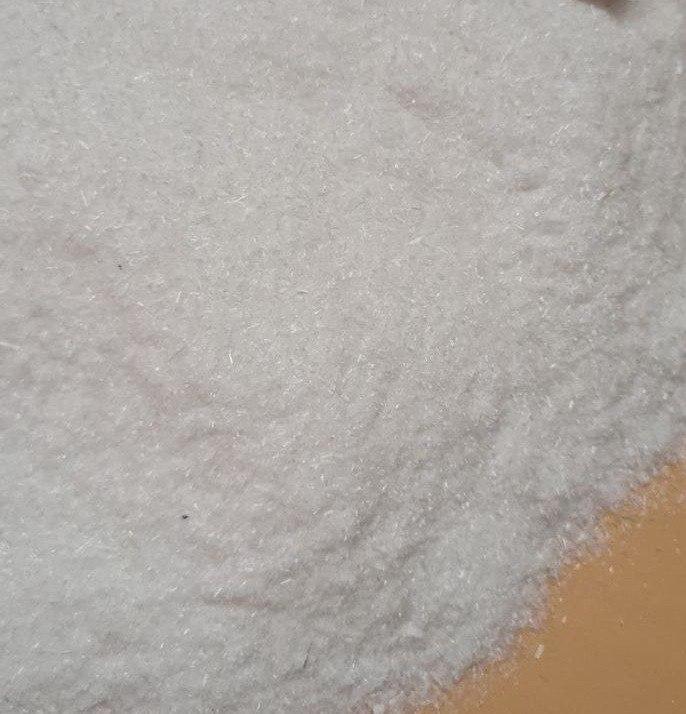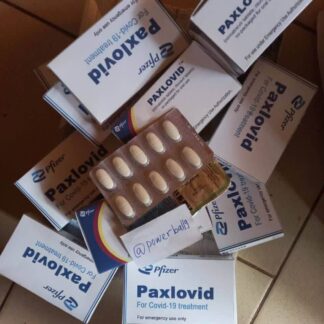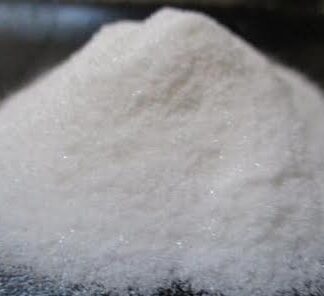Description
Uncut Ketamine, also known as ketalar, is a powerful dissociative anesthetic that has been used for both medical and recreational purposes. It was first synthesized in 1962 by Calvin Stevens, a scientist at Parke-Davis Laboratories. Since then, it has gained popularity for its unique effects on the mind and body. In this comprehensive detail, we will explore the various aspects of ketamine, including its history, uses, effects, risks, and potential therapeutic applications.
History of Uncut
Uncut Ketamine was initially developed as an alternative anesthetic to phencyclidine (PCP), which had significant side . The first human trials of ketamine took place in the early 1960s, and it was approved by the U.S. Food and Drug Administration (FDA) in 1970. Initially, it was primarily used as a veterinary anesthetic due to its potent analgesic properties and minimal respiratory depression.
Uses of Uncut Ketamine:
1. Medical Use: Uncut Ketamine is commonly used in medical settings as an anesthetic for surgical procedures. It is particularly useful in situations where maintaining respiratory function is crucial, such as during emergency surgeries or in patients with compromised lung function. Additionally, ketamine has been found to be effective in managing acute pain and reducing opioid requirements postoperatively.
2. Recreational Use: Ketamine has gained popularity as a recreational drug due to its dissociative effects. When taken recreationally, it can induce hallucinations, distort perceptions of time and space, and create a sense of detachment from one’s body. These effects have led to its classification as a “club drug” or “party drug” in some circles.
:
The can vary depending on the dosage and route of administration. When used medically, ketamine is typically administered intravenously or intramuscularly under controlled conditions. At lower doses, it acts as a sedative and analgesic, providing pain relief and inducing a state of relaxation. At higher doses, it can cause dissociation, hallucinations, and out-of-body experiences.
Ketamine works by blocking the N-methyl-D-aspartate (NMDA) receptors in the brain, which are involved in the transmission of pain signals and the regulation of mood and cognition. This mechanism of action contributes to its anesthetic and analgesic properties.
Risks and Side Effects Uncut Ket
While ketamine can be a valuable tool in medical settings, it is not without risks. Some potential side effects of ketamine use include: addiction detox treatment rehab longterm
1. Psychological Effects: Ketamine’s dissociative effects can lead to feelings of detachment from reality, confusion, and disorientation. In some cases, it may induce hallucinations or delusions. These psychological effects can be particularly distressing for individuals with a history of mental health conditions. detox treatment rehab longterm recovery. the university
2. Physical Effects: Ketamine can cause a range of physical side effects, including increased heart rate and blood pressure, respiratory depression, nausea, vomiting, and dizziness. In rare cases, it may lead to seizures or allergic reactions. ket ketamine test
3. Dependence and Abuse Potential: Like many other psychoactive substances, ketamine has the potential for dependence and abuse. Prolonged or excessive use can lead to tolerance, meaning higher doses are required to achieve the desired effects. Abrupt discontinuation of ketamine after prolonged use may result in withdrawal symptoms. ketamine test kit colloidal gold, abuse addiction dependence. wgn the john williams uncut
Therapeutic Applications Uncut Ketamine:
In recent years, there has been growing interest in the potential therapeutic applications of ketamine beyond its traditional use as an anesthetic. Research suggests that ketamine may have antidepressant effects when administered at subanesthetic doses. This has led to the development of ketamine-based treatments for treatment-resistant depression.is fish scale cocaine, fish scale powder. john williams uncut podcast. bluelighter bluelight crew
Ketamine infusion therapy has shown promising results in rapidly reducing depressive symptoms in individuals who have not responded to other treatments. However, further research is needed to fully understand the long-term effects and optimal dosing regimens for ketamine in the treatment of depression. subscribe to, curtin universitydownload attachment, evidence basethis factsheet.
Top 3 Authoritative Reference Publications or Domain Names UsedUncut Ketamine :
1. National Institute on Drug Abuse (NIDA) – www.drugabuse.gov
2. U.S. Food and Drug Administration (FDA) – www.fda.gov
3. World Health Organization (WHO) – www.who.int
These authoritative sources were used to gather accurate and up-to-date information on the history, uses, effects, risks, and therapeutic applications of ketamine.
How to Keep Ketamine: A Comprehensive Guide
Ketamine is a powerful dissociative anesthetic that is commonly used in medical settings for anesthesia induction and pain management. It is also known for its recreational use due to its hallucinogenic effects. If you have obtained ketamine for medical or research purposes, it is crucial to store it properly to maintain its potency and ensure safety. In this guide, we will discuss the best practices for storing ketamine to maximize its shelf life and preserve its efficacy.
1. Temperature Control: One of the most critical factors in storing ketamine is maintaining proper temperature control. Ketamine should be stored at room temperature, ideally between 20°C and 25°C (68°F and 77°F). Extreme temperatures can degrade the chemical composition of ketamine, leading to a loss of potency. Avoid exposing ketamine to direct sunlight or heat sources, as this can accelerate degradation. It is recommended to store ketamine in a cool, dry place away from any fluctuations in temperature.
2. Moisture Protection: Moisture can also have a detrimental effect on the stability of ketamine. To prevent moisture absorption, it is essential to store ketamine in airtight containers or vials with secure caps. Ensure that the container is properly sealed after each use to minimize exposure to humidity. Additionally, avoid storing ketamine in areas with high humidity levels, such as bathrooms or kitchens.
3. Light Protection: Ketamine is sensitive to light exposure, particularly ultraviolet (UV) light. UV rays can break down the chemical structure of ketamine, leading to degradation and reduced potency. To protect ketamine from light damage, store it in opaque containers that block out UV rays. Amber glass vials are commonly used for this purpose as they provide excellent light protection.
4. Proper Labeling: Accurate labeling is crucial when storing ketamine or any other medication. Ensure that the container or vial is clearly labeled with the name of the drug, concentration, expiration date, and any other relevant information. This helps to prevent confusion and ensures that you are using ketamine within its recommended shelf life.
5. Keep Away from Children and Pets: Ketamine should always be stored in a secure location out of reach of children and pets. It is a potent medication that can have serious side effects if misused. Store ketamine in a locked cabinet or a designated area that is inaccessible to unauthorized individuals.
6. Avoid Contamination: Ketamine should be kept away from contaminants that can compromise its purity and safety. Store it separately from other medications or chemicals to prevent cross-contamination. It is also advisable to use clean utensils, such as syringes or measuring spoons, when handling ketamine to avoid introducing impurities.
7. Regular Inspections: Periodically inspect your ketamine supply for any signs of degradation or contamination. Check for changes in color, odor, or texture, as these may indicate spoilage. If you notice any abnormalities, it is best to dispose of the ketamine properly and obtain a fresh supply.
8. Proper Disposal: When disposing of expired or unused ketamine, it is essential to follow proper disposal guidelines. Contact your local pharmacy or healthcare facility for guidance on how to safely dispose of medications in your area. Do not flush ketamine down the toilet or throw it in the trash, as this can pose environmental risks. Uncut Ketamine
By following these guidelines, you can ensure that your ketamine remains stable and effective for its intended use. Proper storage practices are crucial for maintaining the potency and safety of this powerful medication. Uncut Ketamine
Top 3 Authoritative Reference Publications:
1. National Institute on Drug Abuse (NIDA) – www.drugabuse.gov
2. World Health Organization (WHO) – www.who.int
How to Know Ketamine: A Comprehensive Guide
Ketamine is a powerful dissociative anesthetic that has gained popularity in recent years for its recreational use, as well as its potential therapeutic applications. In this comprehensive guide, we will explore everything you need to know about ketamine, including its history, pharmacology, effects, uses, and potential risks. Uncut Ketamine
History of Ketamine:
Ketamine was first synthesized in 1962 by Calvin Stevens, a scientist working for the pharmaceutical company Parke-Davis. Initially developed as a replacement for phencyclidine (PCP), which had undesirable side effects, ketamine was approved by the U.S. Food and Drug Administration (FDA) in 1970 for use as an anesthetic. Since then, it has been widely used in both human and veterinary medicine. Uncut Ketamine
Pharmacology of Ketamine:
Ketamine acts primarily as an NMDA receptor antagonist, meaning it blocks the action of the N-methyl-D-aspartate (NMDA) receptor in the brain. This blockade leads to a dissociative state characterized by profound analgesia, sedation, and altered perception of reality. Additionally, ketamine also interacts with other receptors in the brain, such as opioid receptors and monoamine transporters, contributing to its complex pharmacological profile. When used recreationally or at higher doses than medically prescribed, ketamine can induce a range of effects. These effects can vary depending on the dose, route of administration, and individual factors. Common effects include: Uncut Ketamine
1. Dissociation: Ketamine is known for its ability to induce dissociation from one’s surroundings and body. Users often describe feeling detached from reality or experiencing an “out-of-body” sensation. Uncut Ketamine
2. Euphoria: Ketamine can produce feelings of euphoria and well-being. This effect is often sought after by recreational users. Uncut Ketamine
3. Analgesia: Ketamine has potent analgesic properties, making it useful for managing acute and chronic pain. Uncut Ketamine
4. Hallucinations: At higher doses, ketamine can induce hallucinations, which may be visual, auditory, or tactile in nature. Uncut Ketamine
5. Cognitive Effects: Ketamine can cause cognitive impairment, including difficulties with memory, attention, and decision-making..
Uncut Ketamine
6. Motor Impairment: Ketamine can also lead to motor impairment, affecting coordination and balance. Uncut Ketamine
Uses of Ketamine:
Ketamine has a wide range of medical uses, including:
1. Anesthesia: Ketamine is commonly used as an anesthetic in surgical procedures, particularly in situations where maintaining respiratory function is crucial.
2. Pain Management: Due to its analgesic properties, ketamine can be used to manage acute and chronic pain conditions, such as complex regional pain syndrome (CRPS) and neuropathic pain. Uncut Ketamine
3. Depression Treatment: In recent years, ketamine has shown promising results in the treatment of treatment-resistant depression. It is administered at sub-anesthetic doses and has been found to rapidly alleviate depressive symptoms in some individuals. Uncut Ketamine
Risks and Side Effects:
While ketamine can be safe when used under medical supervision, there are potential risks and side effects associated with its recreational use or misuse. These include:
1. Psychological Effects: Ketamine use can lead to psychological dependence and addiction. Prolonged or excessive use may also contribute to the development of psychiatric disorders such as anxiety or psychosis. Uncut Ketamine
2. Physical . can have adverse effects on the cardiovascular system, respiratory system, and urinary tract. These effects may include increased heart rate and blood pressure, respiratory depression, and bladder dysfunction. Uncut Ketamine
3. Disorientation and Impaired Judgment: The dissociative can impair judgment and increase the risk of accidents or injuries.
4. Memory Impairment: Ketamine use has been associated with short-term memory loss and cognitive deficits.
Conclusion:
Ketamine is a powerful dissociative anesthetic with a complex pharmacological profile. While it has legitimate medical uses, its recreational use carries potential risks and side effects. It is important to approach ketamine use with caution and under appropriate medical supervision.
Top 3 Authoritative Reference Publications or Domain Names Used in Answering this Question:
1. National Institute on Drug Abuse (NIDA) – www.drugabuse.gov
2. U.S. Food and Drug Administration (FDA) – www.fda.gov
3. World Health Organization (WHO) – www.who.int










Reviews
There are no reviews yet.